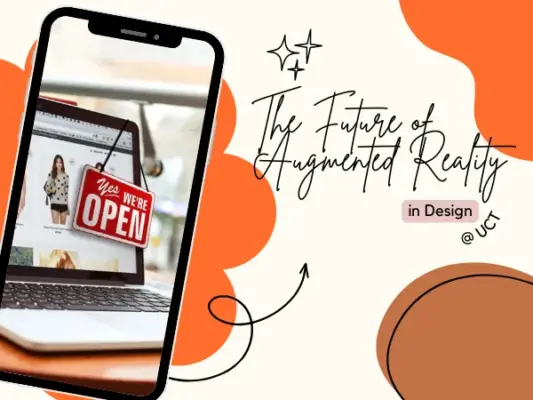
Introduction
Augmented Reality (AR) is no longer a futuristic concept but an emerging technology transforming various fields, including design. By overlaying digital elements onto the real world, AR creates immersive experiences that enhance how we interact with our environment. This blog explores how AR is shaping the future of design, offering innovative opportunities for designers to engage users in new and exciting ways.
What is Augmented Reality?
Augmented Reality integrates digital information with the user’s real-world environment in real time. Unlike Virtual Reality (VR), which creates an entirely virtual environment, AR enhances the existing world with interactive digital elements, such as images, sounds, and information. This technology leverages devices like smartphones, tablets, and AR glasses to deliver a seamless blend of the physical and digital worlds.
The Impact of AR on Design
1. Interactive Product Design
AR is revolutionizing product design by enabling designers and clients to visualize and interact with prototypes before they are physically created. Using AR, clients can see how products will look and function in real life, allowing for more informed decision-making and design refinements. This interactive process not only accelerates design development but also improves accuracy and satisfaction.
2. Enhanced User Experience
AR enhances user experience by adding interactive layers to physical spaces. For instance, designers can use AR to create engaging retail experiences where customers can view additional product information, try virtual fittings, or see how items fit into their homes. This level of engagement helps users make better choices and creates memorable interactions with brands.
3. Architectural Visualization
In architecture and interior design, AR offers a powerful tool for visualizing spaces. Clients can explore 3D models of buildings or interiors in their actual environment before construction begins. AR allows for real-time adjustments and modifications, providing a clearer understanding of scale, proportions, and design elements, leading to more successful projects.
4. Immersive Marketing Campaigns
AR is transforming marketing by creating immersive and interactive campaigns that capture attention and drive engagement. Brands can design AR experiences that allow users to interact with products, participate in virtual events, or engage with branded content in novel ways. These experiences not only enhance brand visibility but also foster deeper connections with audiences.
5. Education and Training
AR is also making waves in education and training by providing interactive learning experiences. Designers can create AR applications that overlay instructional content onto real-world objects, making complex concepts more accessible and engaging. This approach enhances understanding and retention, offering new possibilities for educational design.
The Challenges Ahead
While AR presents exciting opportunities, it also comes with challenges:
1. Technical Limitations: The technology is still evolving, and current AR devices may have limitations in terms of processing power, display quality, and battery life. Designers must work within these constraints to create effective AR experiences.
2. User Privacy: AR applications often collect data about users’ environments and interactions. Designers need to prioritize user privacy and ensure that data collection is transparent and secure.
3. Cost and Accessibility: Developing AR experiences can be expensive and may require specialized hardware. Designers need to consider cost factors and explore ways to make AR more accessible to a broader audience.
4. User Experience Design: Designing intuitive and user-friendly AR interfaces is crucial. The integration of digital elements with the real world must be seamless and enhance, rather than detract from, the user experience.
The Future of AR in Design
The future of AR in design is promising and full of potential. As technology advances, AR is expected to become more integrated into our daily lives, offering even more opportunities for creativity and innovation. Designers will continue to explore new ways to harness AR to enhance user experiences, drive engagement, and push the boundaries of what’s possible.
In conclusion, Augmented Reality is set to revolutionize the design industry by merging the digital and physical worlds in ways that are interactive, immersive, and transformative. Embracing AR technology now will position designers at the forefront of innovation, enabling them to create dynamic and engaging experiences that captivate and inspire.